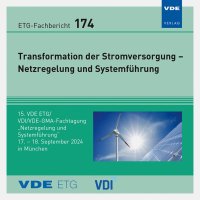A data-driven assessment of underfrequency load shedding and its dependence on distributed generation for Germany
Konferenz: Transformation der Stromversorgung – Netzregelung und Systemführung - 15. ETG/GMA-Fachtagung „Netzregelung und Systemführung“
17.08.2024-18.08.2024 in Munich, Germany
Tagungsband: ETG-Fb. 174: Transformation der Stromversorgung – Netzregelung und Systemführung
Seiten: 6Sprache: EnglischTyp: PDF
Autoren:
Jahn, Benedikt; Suchantke, Rene; Brunne, Alexander; Massmann, Janek; Becker, Roland; Deiml, Georg; Orlishausen, Michael; Lehner, Joachim; Vesenmaier, Bernd; Lens, Hendrik
Inhalt:
In case of major imbalances resulting in a lack of active power in the electrical transmission network, the resulting frequency decline may trigger underfrequency load shedding (UFLS), disconnecting loads at the distribution level in order to avoid a blackout. As the expansion of distributed generation (DG) in low- and mediumvoltage networks continues, the effective net load that may be shed using UFLS installations decreases. However, since disturbances that lead to UFLS are exceptionally rare in the continental European synchronous area, little data is available to support and quantify that effect. In this contribution, we fill that gap by analysing data gathered in the 2020 monitoring of sheddable loads in Germany. Regionally aggregated UFLS potentials are shown and correlations with DG are discussed. Furthermore, UFLS effectiveness is discussed in the light of reasonable disturbance scenarios, coming to the conclusion that regionalised import balances are of high relevance when it comes to UFLS assessment. A linear regression model that predicts UFLS potential with high accuracy based on regional load, total generation and generation from wind and solar power is introduced.


